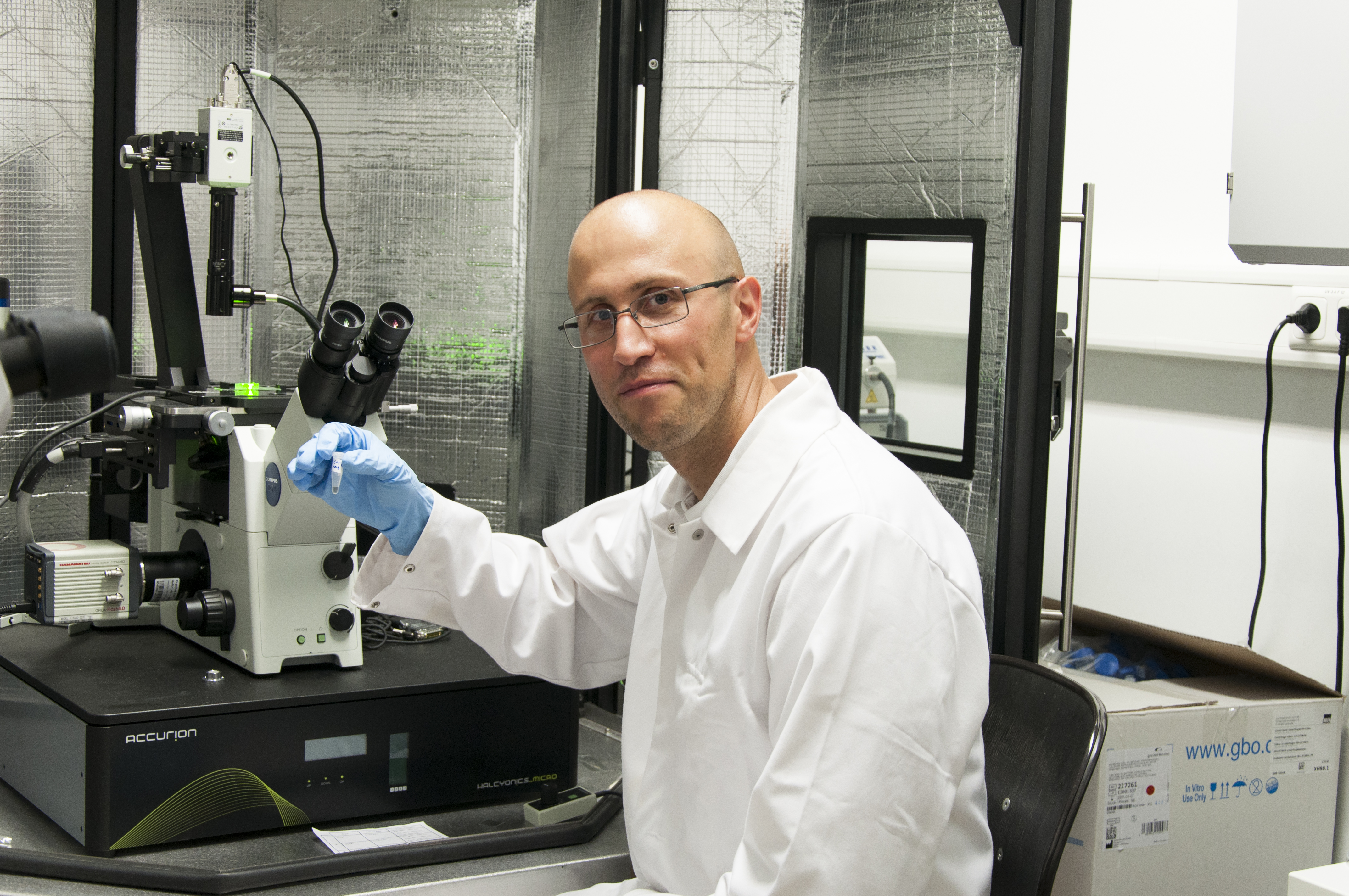New biosensor research group at Fraunhofer IMS aims to enable ultra-fast identification of pathogens
With the help of optical biosensors, bacteria and viruses could be detected in seconds. Patients would no longer have to wait days for their test results, sterile rooms, medical equipment, production processes and food could be monitored in real time. A new working group has been founded at the Fraunhofer IMS in Duisburg that wants to make all this possible.

The plan is to achieve ultra-fast "in situ identification" of pathogens. To this end, the new 5-member working group led by biosensorics expert Dr Sebastian Kruss wants to functionalise biosensors in such a way that they indicate bacteria, viruses and other pathogens optically and consequently without contact. This would eliminate the time-consuming preparation of samples.
Corona could be combated much more effectively with optical biosensors
With the help of such fast and inexpensive diagnostics, a whole series of current challenges could be effectively countered, from the rapidly increasing antibiotic resistances to the spread of new types of viruses. Last but not least, the Corona pandemic could be fought much more effectively with the help of optical biosensors.
The potential applications of optical biosensors are far from exhausted
So far, there are only a few commercially used biosensors, such as the blood glucose sensor for diabetes patients. Their mostly low sensitivity and the lack of system integration are exemplary for several obstacles that have so far limited the application of such sensors in other areas.
Dr. Sebastian Kruss is breaking new ground: he combines single-molecule sensitivity with single-photon detectors. At the same time, he is increasing the number of sensors that can be evaluated. An "artificial nose" constructed in this way could detect a whole range of different substances simultaneously. The sensors are based on nanomaterials that glow in a non-visible range of light. The materials are chemically modified so that they bind antibodies or other biological motifs and thus change their optical properties. Highly sensitive detectors read the optical signals of the nanomaterials and thus identify various biomedically relevant analytes. The search for new vaccines and drugs could also benefit from this.
The funding programme »Attract« has won Dr. Sebastian Kruss for Fraunhofer
The Fraunhofer IMS has recruited Dr Sebastian Kruss to head this working group thanks to the Fraunhofer Attract programme. The funding programme enables external scientists to advance their ideas towards application close to the market within an optimally equipped Fraunhofer Institute. Over the next five years, Dr Kruss will be funded with 2.5 million euros. With his own team and in a technically greatly expanded bio laboratory, he can thus open up biosensor technology for new applications.
About the Fraunhofer IMS
The Fraunhofer Institute for Microelectronic Circuits and Systems IMS in Duisburg is a globally recognized research institution for the development of innovative technologies and processes in microelectronics, smart sensor technologies and embedded artificial intelligence. In the business units "Health”, “Industry”, “Mobility”, “Space and Security”, scientists and engineers create innovative and sustainable solutions for the industry, the service sector and the society - for more than 30 years.
The Fraunhofer-Gesellschaft, headquartered in Germany, is the world’s leading applied research organization. With its focus on developing key technologies that are vital for the future and enabling the commercial exploitation of this work by business and industry, Fraunhofer plays a central role in the innovation process. As a pioneer and catalyst for groundbreaking developments and scientific excellence, Fraunhofer helps shape society now and in the future. Founded in 1949, the Fraunhofer-Gesellschaft currently operates 75 institutes and research institutions throughout Germany. The majority of the organization’s 29,000 employees are qualified scientists and engineers, who work with an annual research budget of 2.8 billion euros. Of this sum, 2.4 billion euros are generated through contract research.